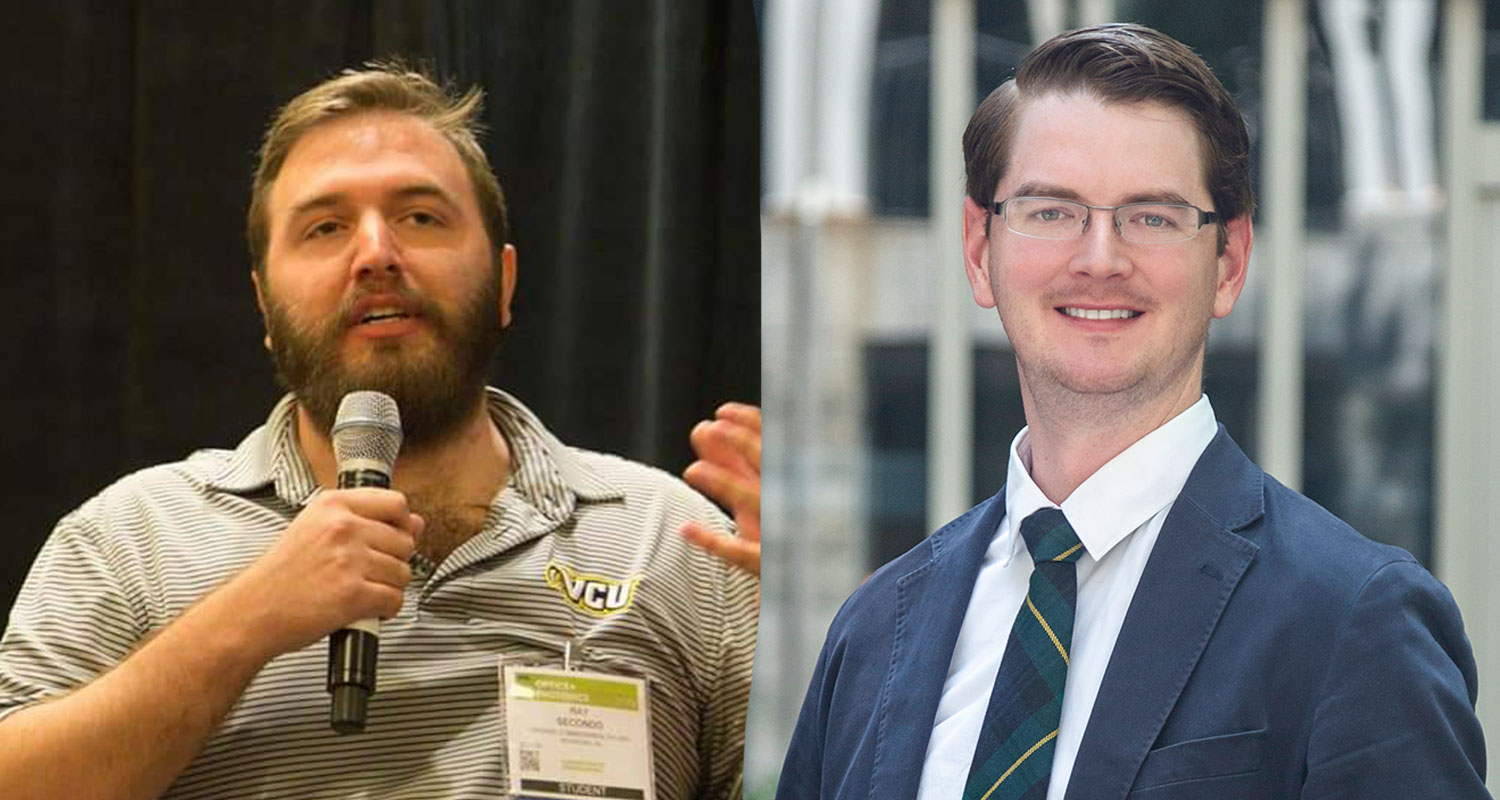The effect of light as it propagates through a material is frequently used in fiber optics, signal processing and smart materials. Ray Secondo, a doctoral student in VCU’s Department of Electrical and Computer Engineering, is lead author of an article that offers researchers a first-of-its-kind mechanism for studying a key aspect of this effect.
Nathaniel Kinsey, Ph.D., assistant professor of electrical engineering and Secondo’s dissertation adviser, is a co-author of the study, which appeared in June in Optical Materials Express.
The research examines the behavior of lightwaves when they hit specialized materials that are both transparent and conductive. These substances have a refractive index low enough to enable switching between metal and dielectric (insulating) features using light pulses.
Known to scientists as epsilon-near-zero materials, Secondo described them as “akin to what you would find in your touchscreen.”
The process of using light to change these materials’ behavior has been successfully studied in experiments and used in practical applications, but the theory behind it has lagged.
To guide future experimental efforts and better applications, the researchers have created a theoretical framework for the intensity-dependent refractive index of the most popular of these materials, heavily doped semiconductors. Their article discusses trends and trade-offs in optimization conditions and material choices. It also provides a tool for evaluating performance of future materials.
Secondo was particularly excited that on the day he learned Optical Materials Express had accepted his article, his sister, Lynn Secondo, Ph.D. (Ph.D.’19), also had an article accepted for publication in a peer-reviewed journal.
“Two papers with sibling authors from VCU were accepted on the same day,” Ray said. “What better representation of the VCU Engineering and ECE [Department of Electrical and Computer Engineering] family?”
Lynn Secondo earned her doctorate in chemical and life science engineering at VCU (dissertation adviser: Nastassja A. Lewinski, Ph.D.) and is now a postdoctoral researcher at Rutgers University.
Her article, which appears in the June 12 issue of Drug and Chemical Toxicology, presents a unique enhancement to a device developed for immediate, on-site air quality testing using lung cells. The study proposes a way to incorporate a sensor within the device’s system to allow for real-time monitoring of cellular oxidative stress during exposure to contaminated air.
Both Ray and Lynn Secondo are lead authors on their respective publications. VCU Engineering faculty are co-investigators on each study.
Articles
Ray Secondo, Jacob Khurgin and Nathaniel Kinsey. “Absorptive loss and band non-parabolicity as a physical origin of large nonlinearity in epsilon-near-zero materials.” Optical Materials Express. Vol. 10, Issue 7. June 10, 2020.
Lynn E. Secondo, Vitaliy Avrutin, Ümit Özgür, Erdem Topsakal and Nastassja A. Lewinski (2020). “Real-time monitoring of cellular oxidative stress during aerosol sampling: a proof of concept study.” Drug and Chemical Toxicology, DOI: 10.1080/01480545.2020.1774774.
